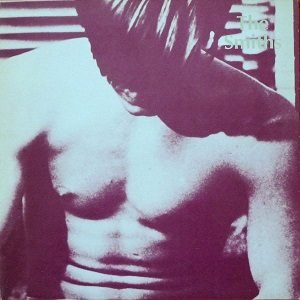Released in 1984, The Smiths marked the arrival of a band that would go on to reshape British indie music. As a debut, the album planted its flag with striking confidence, merging jangle-pop guitar lines with lyrics that were both poetic and deeply personal. At the time, the music landscape was still soaking in the neon glow of synth-pop and the fading echoes of post-punk. The Smiths offered something different. Their sound pulled from the past while speaking sharply to the disillusioned youth of the present.
This first album did not veer off from the direction the band would later explore. Instead, it laid the foundation. Themes of longing, social alienation, and a quiet rage against conformity were not just present — they were central. Johnny Marr’s guitar work gave a bright counterpoint to Morrissey’s often melancholic delivery, suggesting a duality that would become a hallmark of their music.
Sonic Exploration

From its opening track, The Smiths reveals a sound that is both deliberate and raw. The production, handled by John Porter with later involvement from Troy Tate on earlier sessions, leans toward an unpolished charm rather than studio slickness. This choice works in the album’s favor. Rather than masking the emotions at play, the slightly rough mix allows the urgency of the performances to breathe. The guitars chime and rattle, the bass hums with warmth, and the drums stay tight and direct. The production may not shine with high gloss, but it matches the music’s emotional honesty.
Musical Arrangements
Johnny Marr’s guitar arrangements deserve particular praise. He draws from 1960s pop and rock, layering jangling Rickenbacker-style chords with melodic arpeggios. Songs like “This Charming Man” and “What Difference Does It Make?” stand out for their inventive guitar lines that move with both rhythm and melody. Marr avoids standard riffs in favor of patterns that dance and shift, giving each track a textured, woven quality. Andy Rourke’s bass often steps into the spotlight, not just holding the rhythm but adding counter-melodies that elevate the arrangements. Meanwhile, Mike Joyce’s drumming remains steady and supportive, never overpowering the mix.
Vocally, Morrissey brings a dramatic presence that veers between croon and lament. His delivery, often exaggerated and theatrical, adds a layer of irony and depth. The interplay between his vocals and Marr’s bright guitar tones creates a tension — a kind of emotional push and pull — that defines much of the album’s character.
Stylistically, The Smiths draws from a mix of indie pop, post-punk, and 1960s British rock. It nods to the past while pushing into new territory. The band steers clear of synthesizers, which were dominant in the early 80s, and instead crafts a sound built on guitar-driven clarity. This made the album stand out in its time and helped define what would soon be recognized as alternative rock. Though it doesn’t jump genres wildly, the way it reimagines familiar elements gives it a sense of quiet innovation.
Lyrical Analysis

The lyrical world of The Smiths is one of longing, loneliness, and biting social commentary. Morrissey crafts a landscape where the personal and the political blend with wry humor and sharp melancholy. Many of the songs dwell on themes of unrequited love, outsider identity, and the quiet despair of everyday life. Yet these dark undercurrents are never without nuance. They are often dressed in wit, irony, and a deep sensitivity that keeps the album from slipping into self-pity.
Recurring motifs include isolation, romantic rejection, and the search for meaning in a society that seems indifferent. In “Still Ill,” Morrissey questions whether anything in his life has improved, despite the promise of change. The song turns into a meditation on disillusionment, capturing the anxiety of youth facing adulthood. In “Reel Around the Fountain,” he sings about emotional vulnerability and the awkward intensity of early relationships, using rich, almost literary imagery that feels confessional yet universal.
Lyrical Depth
The lyrics walk a line between poetry and prose. They often avoid direct storytelling in favor of emotional snapshots. Phrases like “I dreamt about you last night and I fell out of bed twice” or “I would go out tonight, but I haven’t got a stitch to wear” capture complex feelings with striking economy. Morrissey’s choice of words leans on the romantic and the archaic, lending even his bitterest lines a kind of elegance.
Emotionally, the lyrics carry much of the album’s weight. Morrissey’s voice may not be technically perfect, but it’s expressive and sincere. His words can provoke a smile in one moment and a quiet ache in the next. This emotional duality — between humor and sorrow, arrogance and fragility — creates a tension that lingers long after the music ends. It’s this quality that allows The Smiths to speak to listeners across generations. The emotions are specific, but the feeling of not quite belonging is something many have known.
Cohesion and Flow

The Smiths unfolds with a natural sense of movement, though it doesn’t rely on a strict narrative arc. The album flows more like a collection of emotional states than a linear story. Yet despite this, there is a clear cohesion to how the tracks are arranged. The opening song, “Reel Around the Fountain,” sets a slow, introspective tone. It draws the listener in with vulnerability and a gentle build-up, making way for sharper, more urgent tracks like “You’ve Got Everything Now” and “Miserable Lie.”
These shifts feel purposeful rather than abrupt. The sequencing balances moods without undercutting the album’s emotional core. Brighter, more upbeat moments like “This Charming Man” provide contrast, but they don’t break the album’s atmosphere. Instead, they enhance it, offering relief and variation while still speaking to the same themes of awkward desire and social discomfort.
Thematically, the album holds together with impressive consistency. Whether Morrissey is singing about rejection, class frustration, or existential drift, the tone remains intact — literate, mournful, and tinged with humor. Johnny Marr’s guitar work further ties the tracks together. Even when the tempos change or the arrangements grow more sparse, his distinctive style keeps the album grounded.
While some songs may feel more like standalone pieces than chapters in a unified whole, they all contribute to the album’s emotional landscape. There are no jarring detours or filler tracks that pull the listener out of the experience. Instead, the record feels like a well-curated gallery — each song a different frame, yet all speaking in the same voice.
Standout Tracks and Moments
Several songs on The Smiths rise above an already strong collection, offering moments that define not just the album, but the band’s enduring appeal.
This Charming Man
Chief among them is “This Charming Man,” a track that fuses Johnny Marr’s intricate guitar work with one of Morrissey’s most charismatic vocal performances. The song’s buoyant rhythm and lyrical ambiguity make it instantly memorable. It’s both playful and wistful, capturing the tension between surface charm and deeper insecurity.
Still Ill
“Still Ill” stands out for its lyrical weight and dynamic structure. It begins with a deceptively calm groove before shifting into a more urgent, questioning tone. Morrissey’s lines — “Does the body rule the mind, or does the mind rule the body? I dunno” — reflect the existential unease that runs through much of the album. The way his voice rises with uncertainty over Marr’s steady guitar gives the song its haunting power.
Hand in Glove
Another highlight is “Hand in Glove,” which closes the original album on a note of defiant intimacy. The song’s stark arrangement and raw energy make it feel like a call to arms for the misunderstood and marginalized. The line “The sun shines out of our behinds” is at once ridiculous and moving, capturing Morrissey’s ability to elevate the absurd into something oddly beautiful.
Reel Around the Fountain
One of the album’s most striking moments comes in “Reel Around the Fountain,” where space and silence are used to powerful effect. The slow tempo and gentle layering create an atmosphere of vulnerability that feels almost uncomfortable in its honesty. Marr’s guitar shimmers in the background, never overpowering, allowing Morrissey’s narrative to take center stage.
Artistic Contribution and Innovation

The Smiths arrived at a time when British music was dominated by synth-driven new wave and the lingering edge of post-punk. In that context, the album was both a departure and a quiet revolution. It rejected the glossy futurism of its contemporaries and turned instead to something more organic, introspective, and literary. This choice wasn’t just stylistic — it was ideological. The Smiths positioned themselves as outsiders, crafting a sound that felt both rooted in tradition and bracingly new.
Within the indie and alternative rock landscape, this debut became a touchstone. It helped define the sound of British guitar pop for the next decade, influencing everyone from Suede to Radiohead. The band’s commitment to authenticity — in lyrics, production, and performance — offered a stark contrast to the synthetic polish that had become the norm. Their success showed that there was a hunger for music that felt personal and imperfect.
Innovation
One of the album’s most innovative aspects lies in its emotional vocabulary. Morrissey didn’t just write about love or rebellion; he wrote about boredom, awkwardness, and quiet despair. He gave voice to feelings that had often been left unspoken in pop music. His lyrics brought a sense of introspection that made listeners feel seen in their most vulnerable moments.
Johnny Marr’s guitar work was equally forward-thinking. Rather than following the power chord formulas of punk or the ambient wash of post-punk, he crafted intricate, melodic parts that felt orchestrated yet effortless. His use of layered rhythms and harmonics helped redefine what a guitar could do in a pop context.
The album’s refusal to chase trends became its own innovation. By looking backward — to 1960s pop, soul, and British Invasion rock — The Smiths found a new way forward. In doing so, they didn’t just carve out a niche; they reshaped the genre. The Smiths didn’t demand attention with volume or flash. Instead, it earned its place with clarity, intelligence, and quiet defiance.
Closing Thoughts

The Smiths is a debut that doesn’t try to impress with grandeur, but rather with clarity of vision and emotional truth. Its strengths lie in its lyrical depth, musical inventiveness, and refusal to conform to the prevailing trends of its time. Morrissey’s introspective and often ironic writing invites listeners into a world that feels both personal and oddly universal. Johnny Marr’s guitar work, elegant and intricate, forms the melodic backbone of the album, while the rhythm section supports each song with understated confidence.
The album’s weaknesses, though few, stem mostly from its uneven production. Some tracks lack the sonic polish that might have enhanced their emotional weight. However, this roughness can also be seen as a strength — it adds to the immediacy and sincerity of the music. Not every song is equally impactful, but even the lesser tracks contribute to the album’s overarching mood and message.
As a whole, The Smiths stands as a pivotal release in the history of alternative music. It didn’t just hint at the band’s potential — it delivered on it from the start. For listeners, it offers a kind of companionship, especially to those who have felt out of step with the world around them. Its emotional honesty continues to resonate, making it feel timeless rather than tethered to its era.
Official Rating: 9/10
This score reflects the album’s remarkable debut impact, lyrical innovation, and artistic bravery. It may not be flawless, but its influence and integrity place it among the most important records of its time — and one that still speaks, quietly and powerfully, to those who listen closely.
